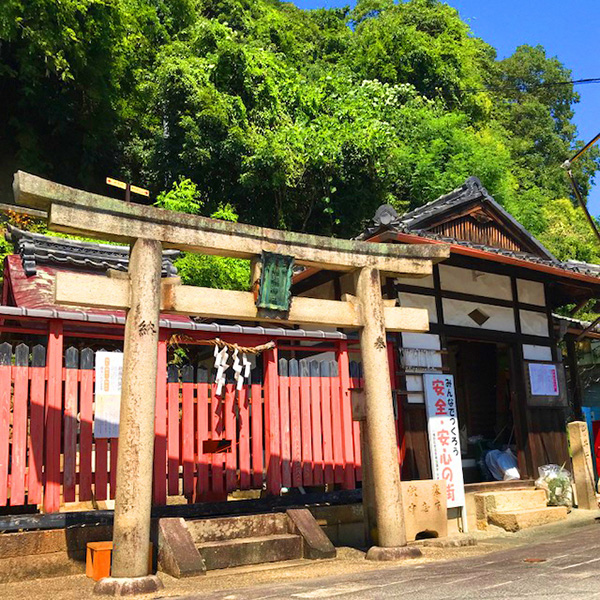Aitsuchi Jinja Shrine

Aitsuchi Jinja Shrine is located at the base of Mt. Otokoyama at the entrance to a path that leads up
to Iwashimizu Hachimangu Shrine. The renowned swordsmiths Gorodayu Yasutsuna and Sanjo Munechika are
said to have used water from the well next to Aitsuchi Shrine to forge blades in the late Heian period
(794–1185). The most famous of these are Higekiri and Hizamaru, two swords considered treasures of the
Minamoto clan, which produced many heroic warriors throughout history. Shrine legend states that
Inari, a deity of commerce and agriculture, appeared to help Gorodayu Yasutsuna forge the blades.
Sometime after the swords were successfully completed, Aitsuchi Shrine was founded next to the well to
worship Inari. The altar is flanked by two statues of foxes, who are considered the sacred messengers
of the deity. The well, called Yama no I (“mountain well”) or Fujiki-i (“wisteria well”), is one of
Yawata’s five historic wells. It was paved with stone in the Edo period (1603–1867). A reference to
the swordsmith Sanjo Munechika was added to the shrine nameplate at an unknown date. Aitsuchi Shrine
was managed by Iwashimizu Hachimangu until 1710, but belief in its blessings was so strong that people
in the neighborhood raised money to care for the shrine independently.
Much speculation remains about Higekiri and Hizamaru, the two swords associated with Aitsuchi Shrine.
According to various ancient texts, they changed names and owners several times throughout history. It
is now believed that two valuable historic swords stored at Kitano Tenmangu Shrine and Daikakuji
Temple in Kyoto may be the legendary Higekiri and Hizamaru. Both swords are nationally designated
Important Cultural Properties.
Aitsuchi Shrine is open for visitors, but the office is unmanned outside of regular rites, which are
held on the 1st and the 15th of each month. For more information, visit the official Aitsuchi Shrine
website. Inquiries through the website are accepted in simple English.

